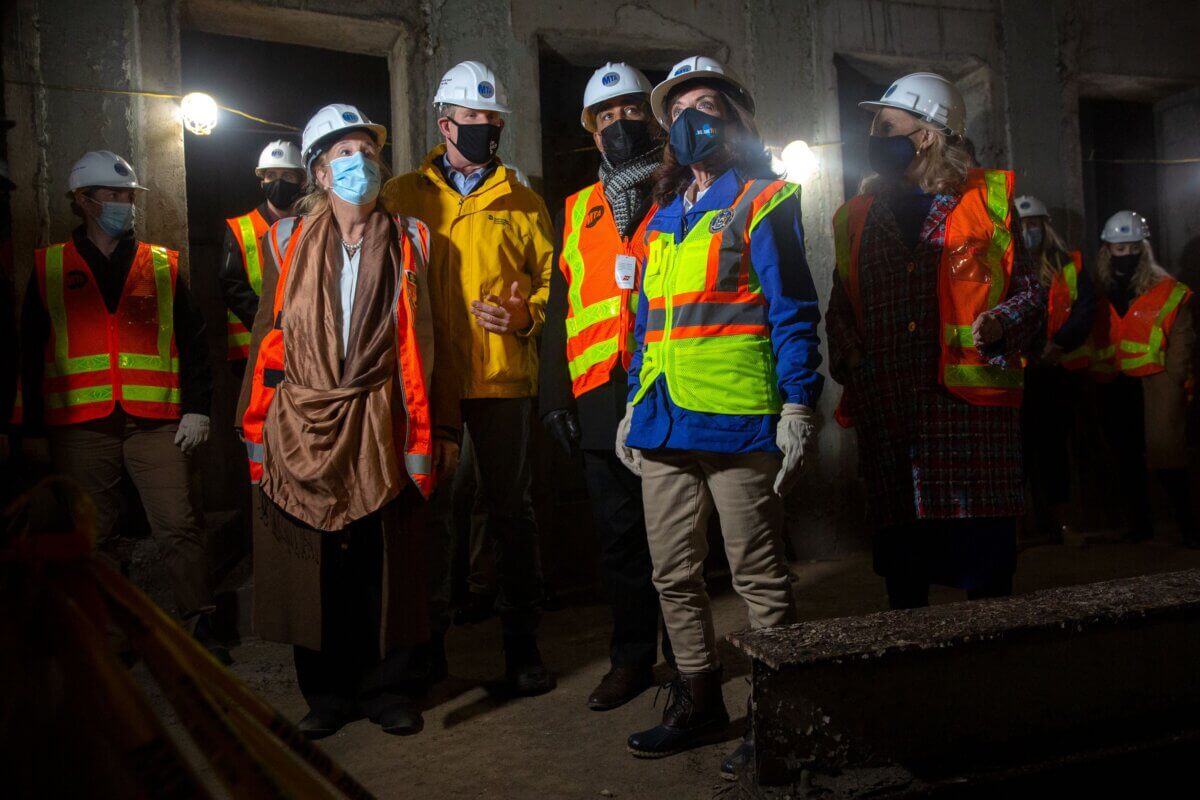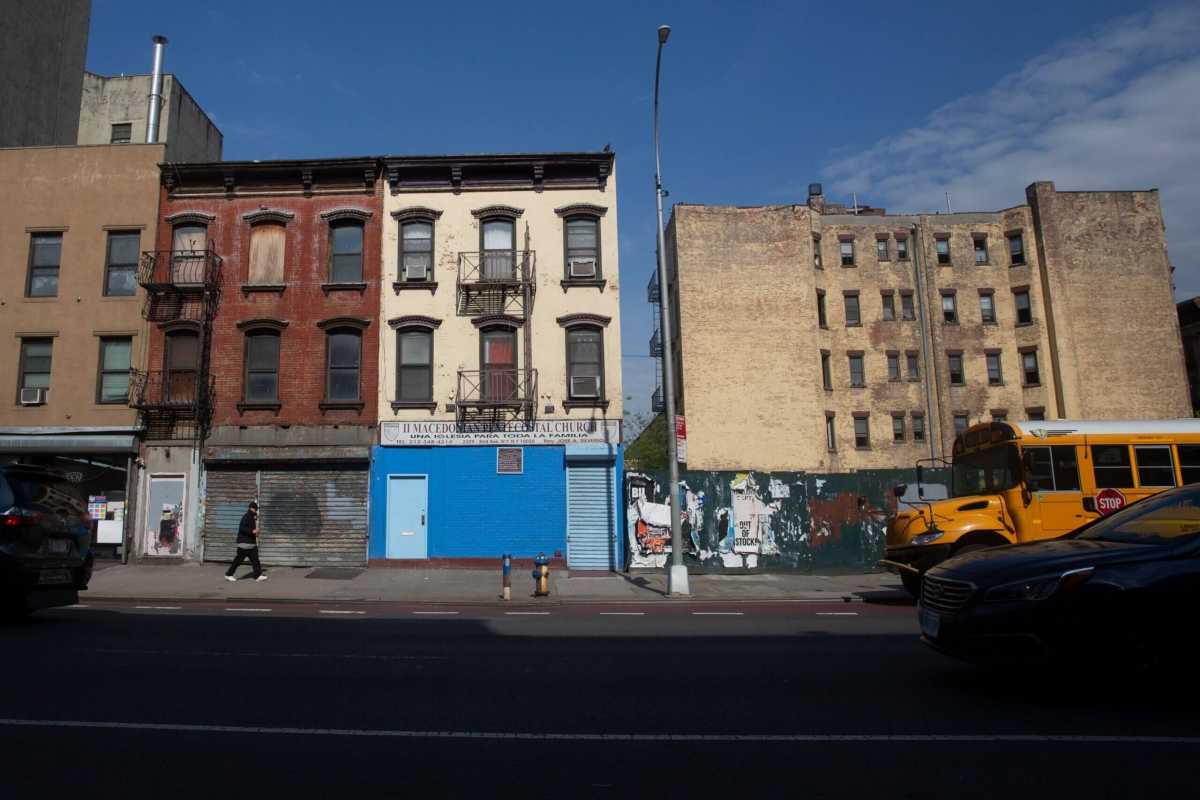This article was originally published on by THE CITY
The MTA is pushing ahead on plans to extend the Second Avenue Subway north through East Harlem by making a move to acquire properties in the path of the project, court papers show.
A petition filed in Manhattan Supreme Court on Wednesday reveals that the agency intends to use the state’s Eminent Domain Procedure Law to acquire several properties that are needed for the next stretch of the Q line from East 96th to 125th streets.
The nine lots along the west side of Second Avenue from East 119th to 120th streets are required for the construction of a “launch box” for tunnel boring machines that would create new tunnels between East 120th and 125th streets as part of the extension, according to the MTA’s filing.
The tunnels would stretch from East 120th Street and Second Avenue to existing train storage tracks at 125th Street near Lenox Avenue. They are to be used for the digging out of a new 125th Street station that would link the No. 4/5/6 subway lines with the Q.
“These filings follow the statutory process laid out in New York law to acquire these parcels, which will allow us to commence this important project for the community of East Harlem,” Michael Cortez, an MTA spokesperson, said in a statement.
THE CITY reported in September 2020 that the MTA had begun the process of acquiring more than a dozen properties along Second Avenue and East 125th Street through what agency records described as “negotiated purchase or condemnation.”

Now, the agency is mapping out its next set of moves for a more than $6 billion subway extension project that was initially proposed to run the length of Manhattan in the 1920s and had a groundbreaking in the 1970 — but whose first stations did not open until January 2017.
“The new line will make the neighborhoods of the East Side more accessible not only to those who live there, but to visitors and workers traveling from other parts of New York City as well,” lawyers for the MTA wrote in court papers.
The properties in the path of the project, according to the court filing, include a storefront Pentecostal church, a laundromat, a vacant lot and several unoccupied buildings.
More than 70 other East Harlem properties along Second Avenue, Park Avenue and East 109th,115th, 124th, 125th and 126th streets have also been identified by the MTA as potential acquisitions under the state’s eminent domain law. MTA officials are expected to say more about property acquisitions at the May meeting of the agency’s finance committee, a spokesperson said.
Resigned to Subway Construction
Some East Harlem neighbors noted that, while they didn’t necessarily want anyone’s property seized, the area is desperate for more subway access.
“Even though eminent domain is part of the process, it’s necessary,” Ronald Morgan, 55, who lives near the planned construction path, told THE CITY. “It’s definitely not worth it to stay the same and just roll with the current situation when we definitely have a transportation issue here.”
Danny Young, the owner of the Lucky Machine Wash Corp., told THE CITY in 2021 that the family-owned laundry business had been around since the 1970s, but that he was “kind of resigned” to it being displaced by subway construction.
“Basically we have little say in it,” Young said at the time. “They have the right to take it if they need the buildings.”
On Wednesday, Young not was at the laundromat, where three customers were washing their clothes among more than a dozen empty machines.
“I have been coming here for years, but I guess I will ultimately have to go somewhere else,” said Ranulfa Bernal, 53, who was doing her wash. “There is no standing in the way of progress.”
Outside La Bodeguita Grocery at East 119th Street and Second Avenue, Jerry Whatts, 63, recalled the earlier wave of subway construction in the 1970s.
“They had to shut down the sidewalks and the streets to put in these beams and whatever,” Whatts said. “We had a wooden sidewalk for God knows how many years.”
Inside the grocery, whose building is not among those marked for condemnation, local resident Henry Rodriguez said extending the subway to East Harlem will be a boon for the neighborhood.
“Everything goes up in value and everything is going to change,” he said. “The church will have to go, the laundry place will have to go, but there are other churches and places to do laundry.”
Next Stop, 125th Street
Phase Two of the Second Avenue Subway line — which would open new stations at East 106th, 116th and 125th streets — received a key federal environmental approval in November 2018. The MTA is now working to bankroll the expansion with federal and local funding. President Joe Biden has also earmarked close to half a billion dollars for the planned expansion in his budget last month.
The next phase would make use of an existing subway tunnel from East 110th to 120th streets that was built in the 1970s and then mothballed amid the city’s financial crisis.
In November 2021, Gov. Kathy Hochul toured the tunnel with MTA officials, saying “Next stop, 125th Street!” as she hailed the potential for federal funding to kickstart the next phase of the line, which MTA chairperson and CEO Janno Lieber has long touted as an overdue promise to East Harlem residents.
The total length of the line, if ever completed, would extend in four phases to Hanover Square in Lower Manhattan.
THE CITY is an independent, nonprofit news outlet dedicated to hard-hitting reporting that serves the people of New York.






































